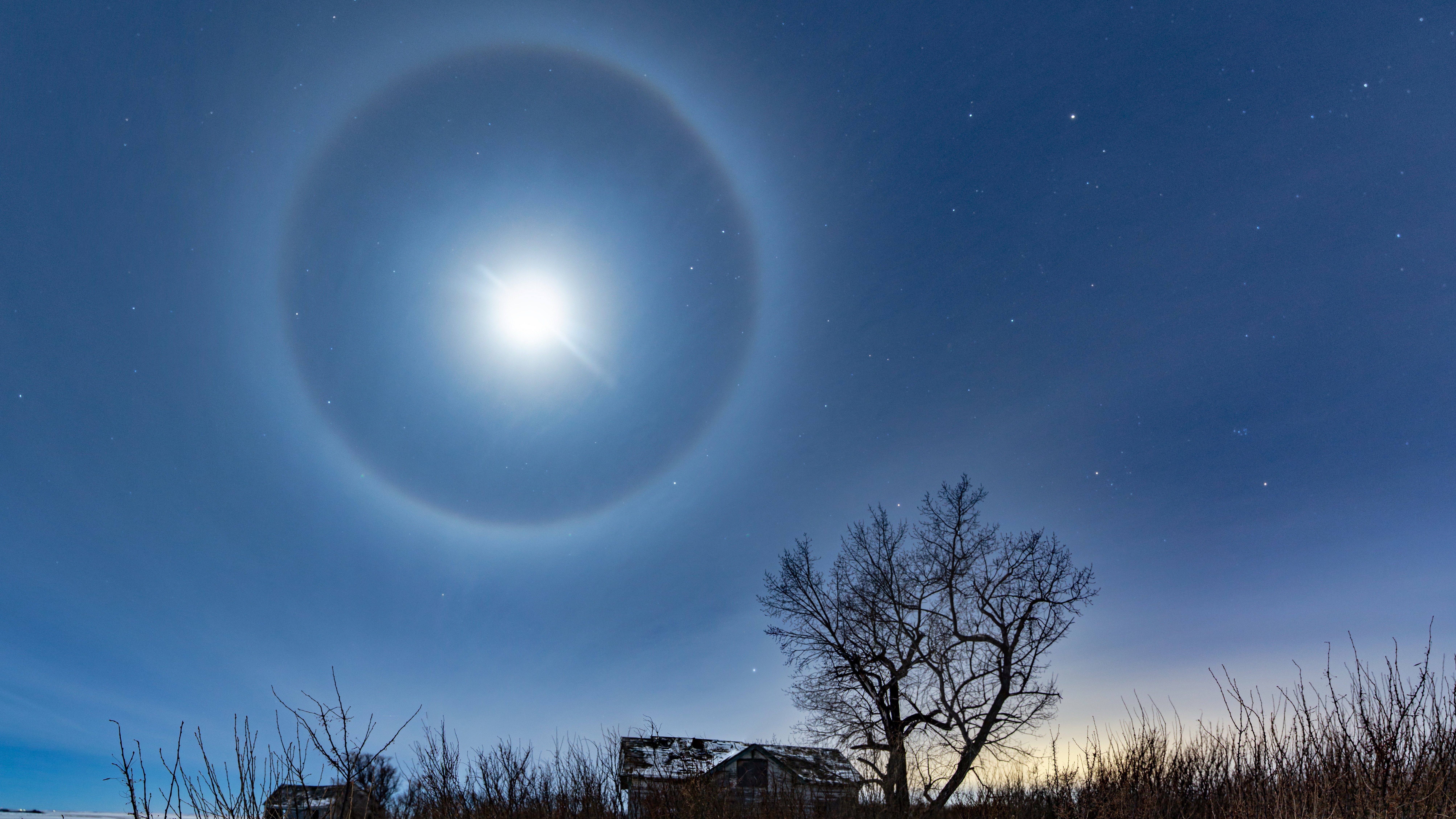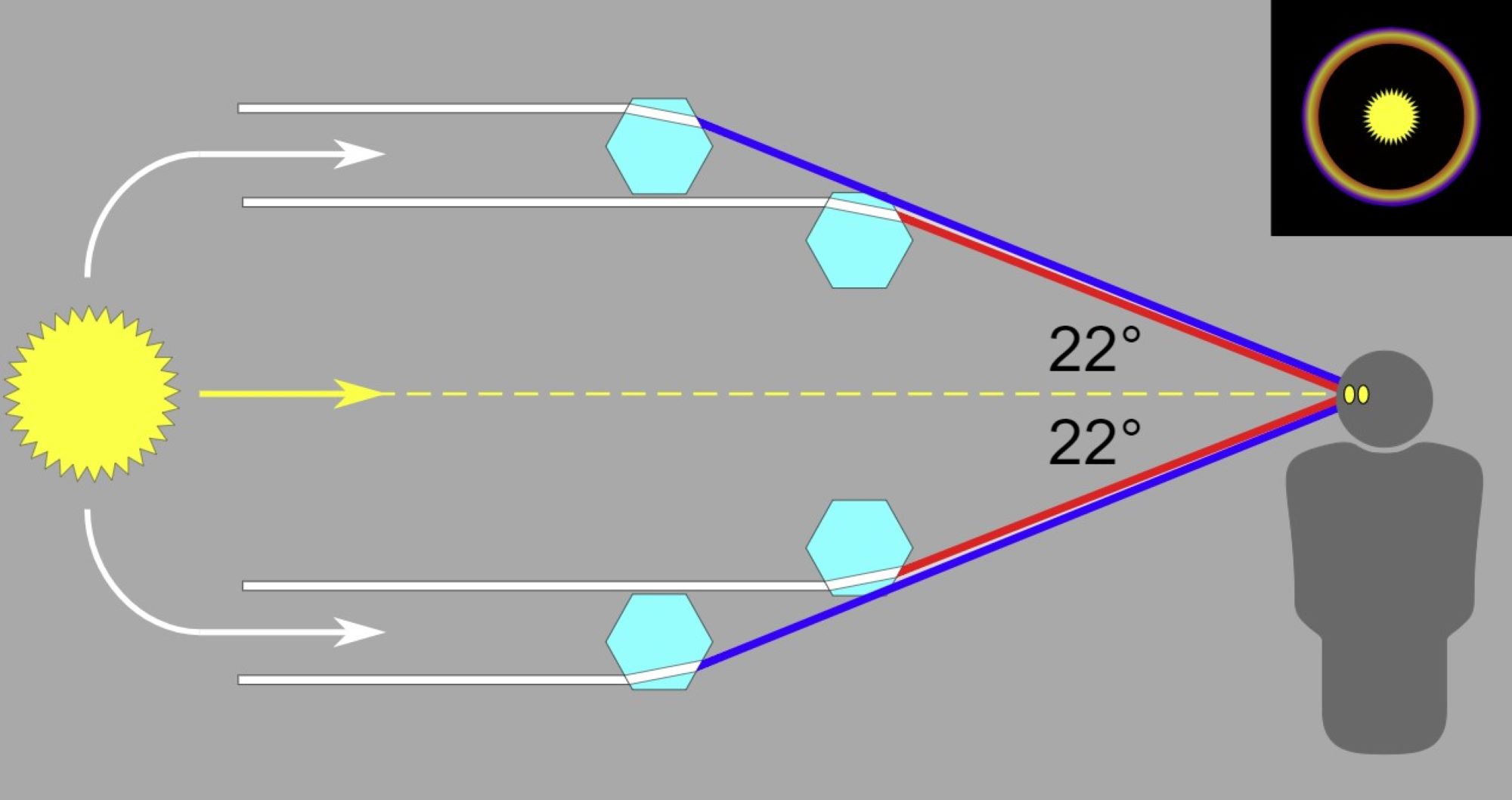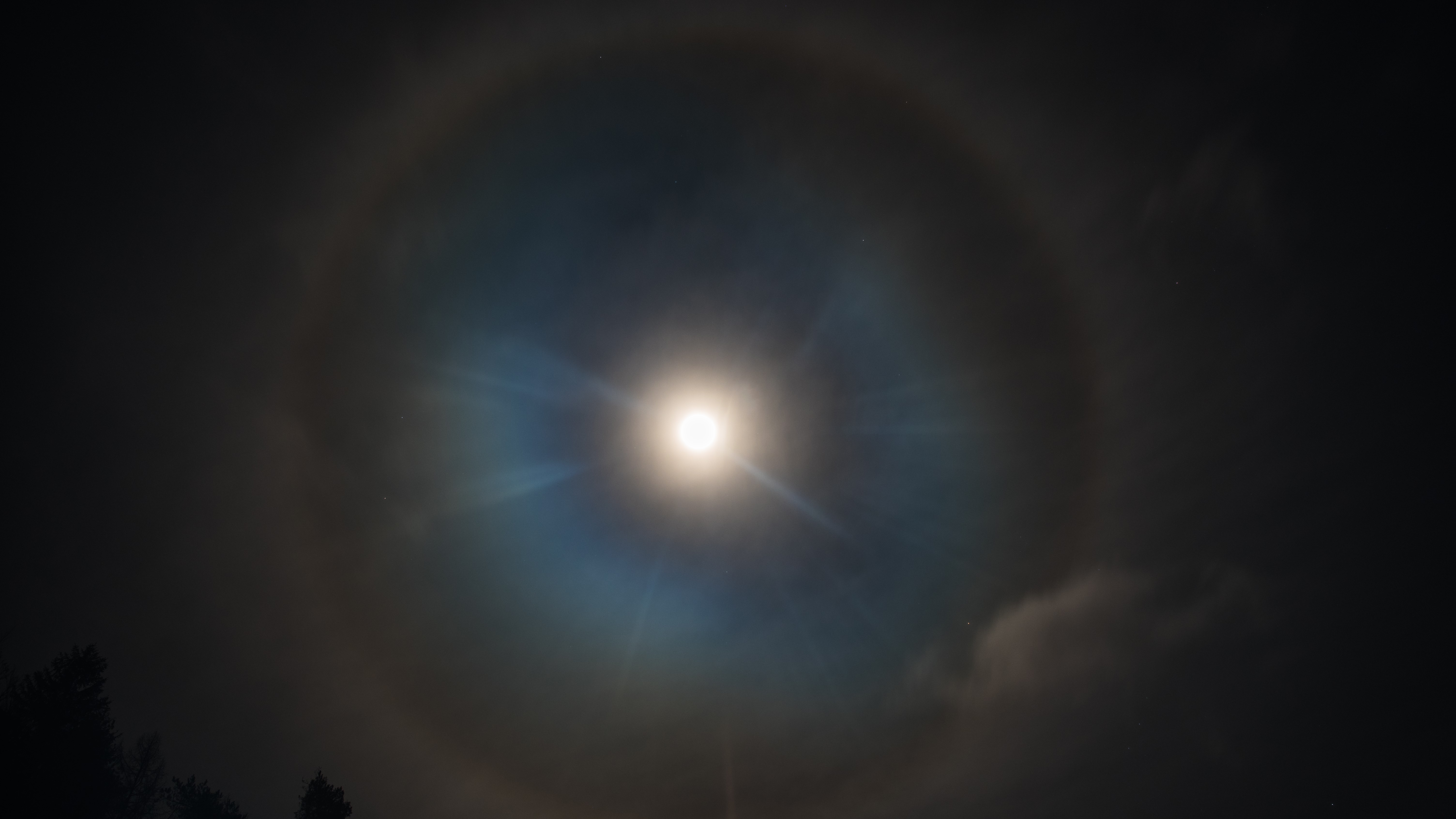
If you've ever looked up at the full moon in the night sky, you may have noticed a large halo of light around it. But why does this lustrous ring sometimes encircle our natural satellite?
While it might seem like a sign you need a new glasses prescription, it's really caused by ice crystals high up in the atmosphere.
"These small ice crystals actually refract the light from the moon," said Kara Lamb, an associate research scientist in the Department of Earth and Environmental Engineering at Columbia University.
Those ice crystals accumulate in cirrus clouds — clouds of pure ice in the stratosphere, up to 31 miles (50 kilometers) above ground. "Because cirrus clouds form high up and can be pretty thin, you may not even observe that there are really obvious clouds there by eye," Lamb told Live Science.
The halo is always the same size, no matter where you are in the world or what the weather is like that day. If you were to measure it — which you can do by holding your hand out wide with your thumb on the moon and your outstretched pinky on the halo — you'd see it was around 22 degrees wide. That's due to the shape of the ice crystals.
Related: Will Earth ever lose its moon?
"More often than not, they have a sort of hexagonal shape, a bit like this pencil," said Philip Laven, an amateur scientist in the U.K. who has co-authored multiple academic papers on atmospheric optics.
These hexagonal, column-shaped ice crystals bend the light in a specific way. When light enters one of the hexagon's six sides, it's bent, or refracted, a little bit. It’s bent again when the light exits the other side of the hexagon, resulting in a total bend of 22 degrees. This is true no matter what orientation the crystal has.

The result is that light traveling from the moon to your eye detours through the ice crystals and ends up 22 degrees away from where it started. This forms a glowing halo around the moon.
"If you see a 22-degree halo, you might also, if you're very lucky, see a 46-degree halo, which is enormous. It covers half the sky," Laven told Live Science.
That happens when light travels from one side of the hexagon to one of the flat ends of the column or vice versa, which bends the light even more to create an even larger halo.
But what does it all mean? In folklore, a moon halo is a sign that bad weather is coming. Lamb said that's not far from the truth.
"I think it makes sense because there are two different ways you can form cirrus clouds in the atmosphere," she said.

One way is the "in situ" form, in which warm air rises high enough to freeze into ice crystals.
"But the other way that they form is when you have these cumulonimbus clouds — these big towering storm clouds," Lamb said. "And then you'll get cirrus clouds that form from the anvil [or top] of these storm clouds. So it would make sense that you would see the cirrus clouds preceding these large storm systems."
Halos aren't unique to the moon. They can also happen around the sun, though they can be harder to spot because the sun is so bright.
Halos even happen on other planets.
"You can have ice crystals on Mars," Lamb said. "Clouds that are formed out of CO2 form ice crystals."
The Perseverance rover even spotted a sun halo on Mars in December 2021.
Moon halos are part of several related phenomena, including sun dogs, concentrated patches of sunlight on the right or left of the sun which are caused by plate-shaped hexagonal ice crystals; and the corona, a smaller, rainbow-colored ring of light around the moon or sun caused by water droplets in the atmosphere.







